







Thank you to everyone who has joined Gulf Savannah NRM for events, workshops and field days in the last few months here are a few of our favourite highlights!


As we turn the pages of our Spring edition, the common thread weaving these stories together is the deep connection between environment, agriculture and people. Across the Gulf, these worlds are inextricably linked healthy soils, thriving wildlife, and resilient communities are not just a backdrop, they’re the foundations for our way of life
This issue highlights just how much we have to protect, from the delicate work of conserving endangered species to empowering farmers to adopt regenerative practices We hope you enjoy!
ZoeWilliams
CEO Gulf Savannah NRM

We're a not-for-profit organisation working to promote healthy landscapes while supporting local people and enterprise. Come say hi at our offices in Georgetown, Croydon, and Mareeba.
Stay up to date with our monthly newsletter subscribe at http://bit.ly/4mGX74w.
gulfsavannahnrm.org 40921088
admin@gulfsavannahnrm.or



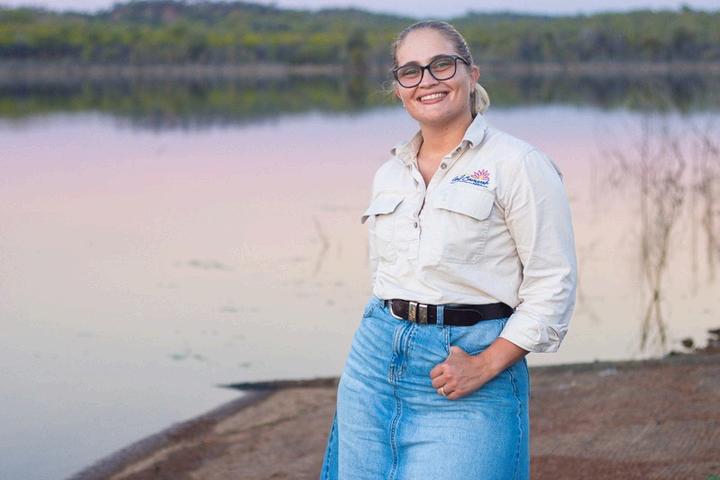










Mareeba Deputy Mayor Lenore Wyatt urges faster removal of saltwater crocodiles from Zone F waterways, citing youth safety and delays in removing a 4 6m croc from Two Mile Creek Believing the species was introduced locally, she calls for extending removal zones to the Barron River and prompt public reporting of sightings (TheExpress).
Queensland government has pledged $4 5 million for aerial and ground spraying to combat locust swarms, which can devastate pastures and threaten livestock feed Graziers across the west welcomed the move, with an extra $1 million in federal-state disaster funding also supporting the response (ABC News).


The QFPI Exclusion Fencing Grants Scheme offers up to $250,000 per applicant to build new boundary fencing that protects livestock from wild dogs. Landholders must co-fund 50% of costs and complete projects within three years. Applications close 31 October 2025 via QRIDA. For full details on eligibility criteria and how to apply, visit: www.dpi.qld.gov.au




9,660 people live in the Northern Gulf

MINIBULLRIDERSHINESAT WORLDFINALS
ABC Far North reports Carl Douglas Jr, a 10-year-old from Kowanyama, competed in the International Mini Bull Riding Association World Finals in Utah, placing third in the junior division and seventh overall. He took up the sport just two years ago. Now representing Australia, his hometown held a celebratory parade upon his return (ABCNews).
88% land use is grazing on native pasture
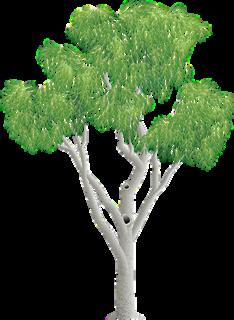
50YEARSSUPPORTING INDIGENOUSCOMMUNITIES


Deputy Premier Jarrod Bleijie has launched two digital platforms Live North West and Jobs North West to attract workers, families, and investors to the region. Developed with RDA Townsville and NW Queensland councils, the platforms highlight lifestyle, employment, education, and business opportunities, aiming to address workforce shortages and boost local economic growth (CroydonBush Telegraph)
Ngoonbi Community Service Indigenous Corporation marks its 50th anniversary in 2025. Since 1975, it has grown from the Jilli Binna arts shop in Kuranda to owning 40+ properties and providing housing, aged care, disability, education, and cultural programs. Celebrations were held in Cairns, with more planned in Kuranda (TheExpress).
The area is 196,100 square kilometres


Over 196 reptile, 455 bird and 118 mammal species live here
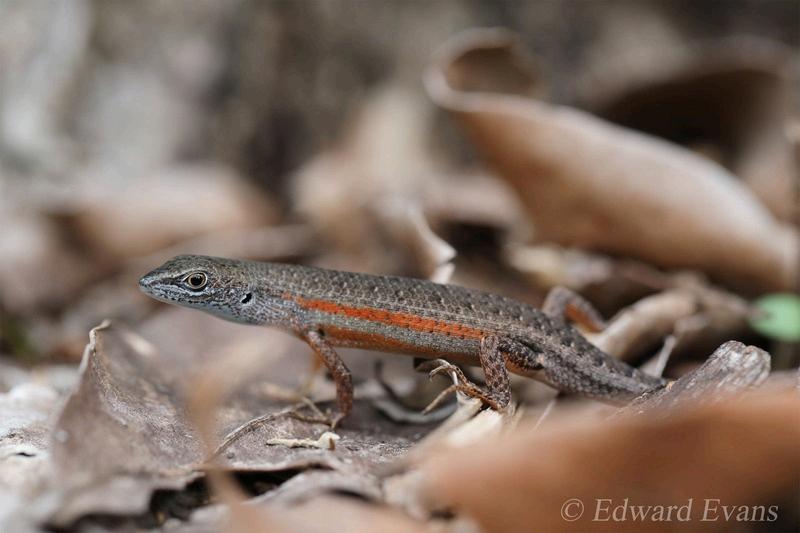

BYDREDWARDEVANS
From disappearing habitats to vanishing species, Australia’s biodiversity is at a tipping point. With proactive conservation and communityengagement, however, the story of loss doesn’t have to be the final chapter.

We’reconditionedtobelievethe endoftheworldwillarrivelikea clamorous“thud!”ona corrugatedroof–thekindof announcementyou’dreceive justbeforetheskysplitsopen Freedfromhumanity’sblissful ignorance,this‘apocalypse’will finallyunveilitselfandgetto workonbuilding20-footwallsof water,imprisoningcitiesin unseasonalblizzards,and slicingopentheearthwithnotso-surgicalincisions
Contrary to this popular belief, catastrophe is not always so obnoxious. Instead, it can be as simple as waking up and wondering where the world went; failing to find the trap door through which the wild slipped away in search of a safer place to call home – a place we aren’t currently providing
The state of biodiversity in Australia more closely emulates the latter scenario: a quiet yet devastating decrease in native species, fueled by invasive pests, environmental destruction and a warming climate The issues are mostly visible, though solutions remain shrouded in controversy
There is, fortunately, much to be learned from a precipice: when we confront the reality of ecosystem collapse with proactive conservation and cultural shifts, the brink becomes less a guaranteed coffin and more a vantage point for change
Ecologist, wildlife photographer and Gulf Savannah NRM (GSNRM) Biodiversity Officer Dr Edward Evans echoes these sentiments, stressing that conservation cannot keep playing catch-up if we hope to protect our native wonders
“When it comes to conservation, we’re often more reactive than proactive, with most attention going to species already imperiled,” Dr Evans said.
“Very little thought is put into broader scale ecosystem collapse that could occur due to things like climate change or various other processes that are happening –thisiswhatmanyecologistsare concernedabout. ”

Though ecosystems boast thousands to millions of years of experience, evolution cannot always account for human interference; some threats are skilled in unpicking nature’s intricate stitches until species have slipped through the seams.
According to the WWF 2024 Living Planet Report, global wildlifepopulationshave declinedby73percentinjust 50years. In Australia, the picture is even more sobering: amphibians have plummeted by 97 per cent, while birds and mammals continue to vanish at alarming rates.
CSIROnowlistsmorethan 1,600 speciesasthreatened,with anotherslippingintoextinction roughlyeverytwoyears Though species loss is concerning within itself, the danger escalates f i i

“Even if a species isn’t officially listed as threatened, a big population drop can still have serious impacts on the role it plays in the ecosystem,” Dr Evans said
“For example, bettongs eat truffles, so they're quite important dispersers of fungi spores What happensifyoutakebettongsout oftheecosystem? Ican'ttell you,butthere'llbeknock-on impactsonfungi,andthere'llbe knock-onimpactsonother speciesthateatfungi.”
Dr Evans went on to apply this principle to one of Northern Queensland’s most iconic species: “As another clear example, it's the same with cassowaries – some plants rely solely on them to disperse their seeds If you take them out of the system, it wouldn't be a shock to find that the tree is no longer dispersed ”
These cases highlight how the loss of even a single species can i i f ff

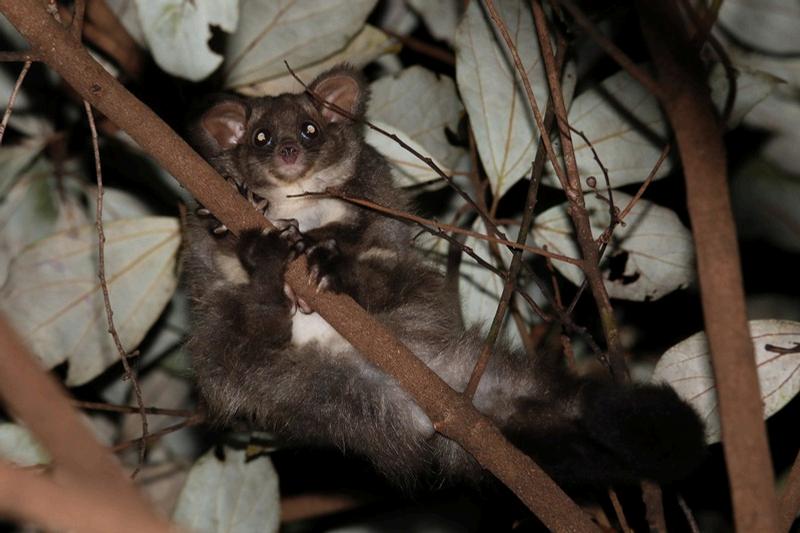
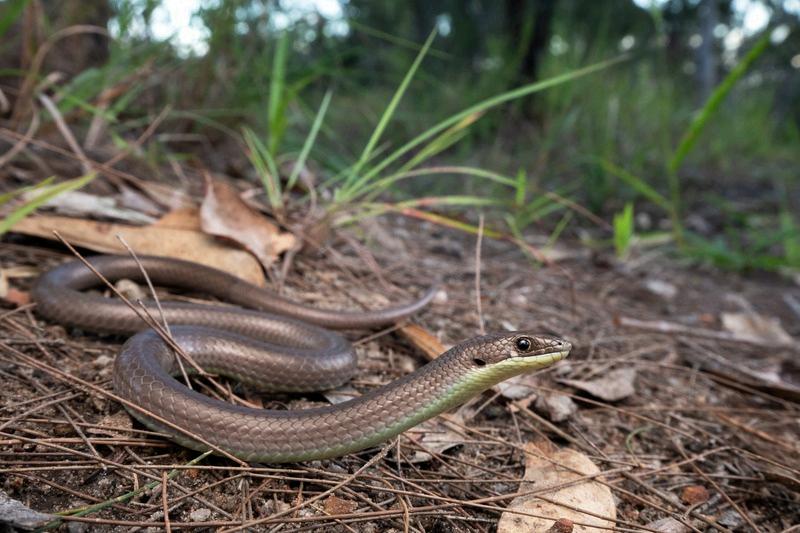
proactive conservation. As Dr Evans notes: “The reality is that for many species we don't fully understand the functions they perform within the ecosystem, and what will happen if their numbers crash.”

of ‘biodiversity’ sappearance, it begs the nation take if its ecological
to the swirl of the curlew, the cackle of the thoscope to its chest and yptus in our lungs and a g on our breath. To lose our e like amputating a vital e all in one; if we t else will leak out along the
our daily lives and constructs y is that our concern is s are beloved household oned curlew and s slip quietly toward the cusses this considerable avourite fauna and the many ly make headlines: diversityofuniqueanimals, cspeciesthatgetthemost
wards particular things like cally endangered lizards with are extremely unique and of et they get very little


Data backs up Dr Evans’ sentiment, as funding shows more than $76 million is being poured into the Saving Koalas Fund over the next 4 years, while figures remain mostly undocumented when it comes to reptile and amphibian protection.
GSNRM is fighting that imbalance on the ground: in Tagalaka Country, we’ve worked with Traditional Owners to protect the northern snake-necked turtle (Chelodina rugosa), a largely unfamiliar species, from pig predation. Preserving lesser-known species like this turtle reminds us that it’s not only ecology at stake, but also culture and history.
GSNRM Indigenous Engagement Officer Natarsha Bell captures this message: “From a cultural approach, we have to think: what does the disappearance of a turtle actually mean?” Ms Bell said “Thisisa storylineforTagalakaTraditional Owners,sothislittleturtleholdsa lotofvaluetotheTagalakpeople. Savingtheturtlesissavingour culturalstoryline.”
A crucial step in conservation then is perhaps to broaden our view of biodiversity, to recognise more as worth protecting, and consider the cultural implications of conservation work
A little responsibility goes a long way
Whether the ‘apocalypse’ comes crashing through a window or creeps up from the floorboards, biodiversity loss isn’t something we need to sit idly by and spectate: our hands and minds have long known how to mend humanity’s trail of mishaps As agriculturalists, artists, and scientists,

our desire to problem-solve persists like a phantom limb, still reaching for tools, words, and one another, even when crisis threatens to cut us off
It’s that same instinct which drives GSNRM’s newly appointed Biodiversity Officer, Océane Dupont. For Ms Dupont, the value of biodiversity is more than professional it’s personal, raising the stakes for whatever steps we take next
Working closely with landholders, Traditional Owners and conservation projects in the Gulf, she sees firsthand how deeply people and ecosystems are intertwined, and that biodiversity’s benefits are not abstract
Conservation is not about choosing between people and the planet it’s about remembering that we are inseparable from it.
“People should care about biodiversity and conserving the nature we have,” Ms Dupont said. “It gives us so much in ecosystem benefits, economic benefits, social benefits and cultural. There are a thousand reasons why we should care about nature, even more than we do right now.”
That attitude is echoed by a growing public awareness. In 2023, the Biodiversity Council found that 97 percentofAustralianswant strongeractionfornature,evenif theydon’tunderstandthefullextent ofthebiodiversitycrisis.
This vast majority, spanning all political alignments, every state and territory, and both urban and rural

communities, expressed support for stronger biodiversity protections: from tougher penalties on wildlife smuggling to predator-free sanctuaries and cat curfews, the policies reflected a strong appetite for action Such broad support shows how deeply nature is threaded through our lives, even if we don’t always name it.
Dr Evans takes that thought one step further: “Inourmodernworld,it’s easyforpeopletobecome disconnectedfromnatureand forgetthat,fromabiological perspective,weareanimalsand partoftheecosystem.Humansare reliantonthenaturalworldforso manyaspectsofoursurvivaland livelihoods,soweshouldensurewe protectit.”
In other words, conservation is not about choosing between people and the planet it’s about remembering that we are inseparable from it.
Our relationship with nature has always been both a question mark and an exclamation point; bound to the human experience, it’s the instinct to flinch at a rustle in the bushes, then gently tell your child, ‘be still, look over there,’ as your outstretched hand guides their wide eyes to a fleeting glimpse of wildlife No degree of industrialisation, however much it’s tried, has managed to excavate this connection from us.
Now, with a proverbial pen placed in all of our hands, we needn’t rewrite the ending of biodiversity in Australia Instead, let’s simply ensure the story continues

By Wayne Young
Australia’sheaviestknowninsecthasrecentlybeen recorded,andit’sacompletelynewspeciesofstickinsect.
The female stick-insect, or phasmid as they are known to scientists, was found in Queensland's wet tropics in February this year It weighed in at an impressive 44g, eclipsing the previous record set by the Giant Burrowing Cockroach, which is also found in our Gulf Savannah region
“It was an amazing bit of serendipity really,” said Renee Young, who found the largest female
“A friend gave a talk at a community conservation group on the Friday about a possible new species they were researching, and on the Sunday while working in the garden, here was this beautiful big insect just hanging about,” she said.
“Her camouflage is amazing, and I’d been weeding right under her for 15mins before I realised it wasn’t a stick hanging off the netting, and she was there!”
It’s also incredible to think that such a huge insect has gone unnoticed by science for so long
This is most likely due to the fact these stick insects seem to live high in the canopy of high-altitude rainforest,” said Ross Coupland, the author of the scientific paper describing the new species ”
“These areas are largely inaccessible, the trees are often shrouded in mist, cloud and rain and the insect is very cryptic ”
The males of the species remain as-yet unknown, but the authors of the paper hope one will be found in due course
“Nature is amazing and there’s still so much to be discovered, right on our doorstep These sorts of discoveries highlight the need for active conservation of forests within the region,” said Ross.


Anecosystemmorediverse thanourrainforests, storingmorecarbonthantheatmosphereand vegetationcombined,andprovidingthebasisfor everysingleecosystemfunction – soilsdomorethan holdupourhouses,bogourcarsandgettracked throughthehouse.
No seriously It provides the fibre needed to make clothes, the feed for a future steak and the materials we need to build a home.
Soil types aren’t ‘good’ or ‘bad’, they’re just different on a physical, chemical and biological level and need to be managed as such. Instead, it’s important to ask: what is fertile soil? One that provides the water, air and nutrients for plants and biology to grow This is influenced by a number of factors: soil structure, pH, microbiology – the list goes on!
When a leaf falls onto the soil surface, it is broken down by microbes into organic matter Organic matter is like liquid gold for a soil; it acts as a glue, holding the soil particles together to improve water infiltration, supplying the plants with essential nutrients and boosting the soil microbial community.
The amount of organic matter in soil determines its fertility, and a big organic pool means lots of good nutrients for plant growth.
Soils also act as a sponge, storing water in air pockets
As water moves into and through it, the soil acts as a filter, cleaning out pollutants and nutrients. The soil holds onto these substances rather than releasing it into the groundwater A healthy soil can transform contaminants into something different, thanks to the hard work of soil microbes. They’ve even found a bacteria that can turn an oil spill into water and carbon dioxide!
Unfortunately, there’s no quick fix to make a soil healthy, but knowledge is power; whether you’re mustering a herd, cropping mangoes or choosing a new vegie patch, having a better understanding of what soil occurs on your land can help you make informed management decisions.
As a producer, soil is your most precious asset; quite literally the foundation upon which your life sits It is a key factor, alongside climate, that determines what you can grow, how well you can grow it and how much help you need to add
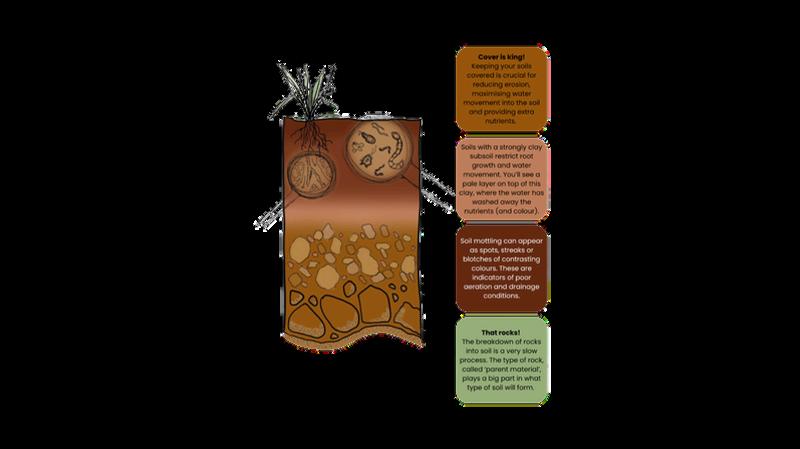






Salinity is the salt content of your soil
All soils have a natural level of salt, and Australia’s are some of the saltiest! Having high levels of salt isn't always a bad thing - in fact, having salty soils can lower the risk of erosion in some contexts. If you’re seeing stunted growth, yellowing on the leaves or bare patches of ground, this might be a sign of high salinity
CLAY(n.)





1)Whatcanyousee?

You should be able to see a topsoil – a darker horizon with lots of roots, decaying leaf litter and earthworms (if you’re lucky!) Beneath that, the soil can be a range of colours and textures. Try to spot different layers as you get deeper!
2)Whatcanyoufeel?

Clay particles are small - they create the chem stickiness that allow so onto nutrients However, because they’re so small, when we have a lot of clay particles and not much else, they can stack closely together and become too heavy A heavy clay is hard to manipulate, and can inhibit root growth into the layer
Bury a pair of cotton undies (or a rag) 5cm deep for 8 weeks and see how the biology in your soil has broken them down over time A healthy, biologically active soil will decompose the cotton more This is best done in spring Don’t forget to leave a tag out so you can find it your undies again!
Explore the soil's top layer (between 2 and 10cm), then venture further into the profile if you can Gather a handful of soil ne layer, add in some water to bring it together and ze it around. Does it feel gritty and sandy? Is it a little y? Is it kind of soapy? Does it seem slick, like clay? This dicate your soil's texture, which determines three key ts: 1) its ability to store water and nutrients, 2) its risk of n and land degradation, and 3) its potential salinity.
3)Grabakit!
You can get pH testing kits from most local hardware stores (check the gardening section!). Try comparing the pH in the top and subsoil across your land. This is a cost-effective and easy way to measure the variability of your land, while it could also highlight any major constraints
4)Understand-itallstartswithsoil!
Science and study kits aside, if there’s one key takeaway, let it be this: soil is fundamental to life on earth Learning more about yours will undoubtedly support you in making informed land management decisions that benefit your wallet, your farm and your world
The most important job of a grazier is to capture sunlight energy, everything else will fall into place.
– Nicole Masters

What a fantastic weekend it was at this year’s Outback by the Sea Festival, held from 12 - 15 September
The celebrations kicked off on Friday night with the Outback by the Sea Film Festival, where hundreds of people enjoyed screenings of Australia’s latest short films, including entries from our very own Normanton State School students. Markets and children’s face painting were also held beforehand
Saturday brought more fun with a Paint by Numbers event at the Normanton Library, while Karumba State School hosted a Colour and Slime Fun Run, which proved to be a huge hit
That evening featured the much-anticipated Festival Concert, with outstanding live performances from The Buckleys, Wesley Dean, and Caitlyn Shadbolt It was a beautiful night of music and family entertainment under the stars
On Sunday, the Film Makers Workshop was held at the Les Wilson Barramundi Discovery Centre, led by actors and directors Steve Bastoni, Carla Bonner, Terry Serio, and Megan Pascoe With a focus on “telling our own stories” and encouraging creativity The workshop inspired many budding film enthusiasts Now in its second year, it’s quickly becoming a much-loved addition to the festival program

In August, the Mareeba Multicultural Festival celebrated its 27th year, promoting harmony and connection in the community through performances, delicious food and interactive workshops This event is held on the last Saturday of August every year in Arnold Park and we hope to see you there next time.



Spring is here and now is the time to prepare for the bushfire and wet season. Stay informed by visiting your local Council’s website for their emergency dashboard and sign up for their Early Warning Network for alerts The Get Ready Queensland website offers great resources, including how to create an escape plan and prepare an emergency kit.
In October, Mareeba Shire Council will be hosting the Dinner and Disasters event at the Mareeba Drive-In This is a family friendly event to help the community connect with local emergency organisations and to get ready for emergency situations and weather events.
Finally, Council supports Mareeba Shire Tourism, the Local Tourism Organisation which promotes the visitor experience in the Mareeba Shire. To keep up to date with opportunities and networking events, join the Mareeba Shire Tourism Facebook group and use #LoveMareebaShire while exploring the Shire!

The 2025 Croydon Heritage Festival was a shining success celebrating connection, culture, and community across nine vibrant days of all-ages events From rodeos and heritage walks to live music, Gulflander rides, games, and fireworks, this year’s festival truly had it all
At its heart was a historic milestone: the official unveiling of the revitalised Archaeological Chinese Temple and Settlement Site. Now proudly transformed, this rare and significant site honours the legacy of Croydon’s early Chinese settlers and their lasting contribution to the town’s story
Visitors now enter through a striking new gateway, flanked by traditional Fu Dog statues, followed by two lotus-inspired shade structures and a golden incense urn handcrafted in China New interpretive signage and a compelling audio trail featuring voices of descendants, knowledge holders, and researchers bring the site’s rich stories to life
The unveiling ceremony welcomed Dr Ruan Zongze, Consul-General of the People’s Republic of China in Brisbane, alongside the Mayor and CEO of Croydon Shire Council, the site architect, the President of CADCAI, and descendants to officially open the site His presence marked the occasion as one of both cultural and international significance
A touching highlight came when visitor K. Chun Tie discovered his family story featured on one of the new signs an emotional moment that sparked a personal journey into heritage With traditional performances, cultural pride, and a magical Outback dinner, the day was unforgettable





WhenfiremovesacrossCountry, itcarriestruthwithit.Oursurvival hasalwaysdependedonthattruth—ourconnectiontoland, water,andspirit.Thesearenot justresources;theyareour lifeblood.
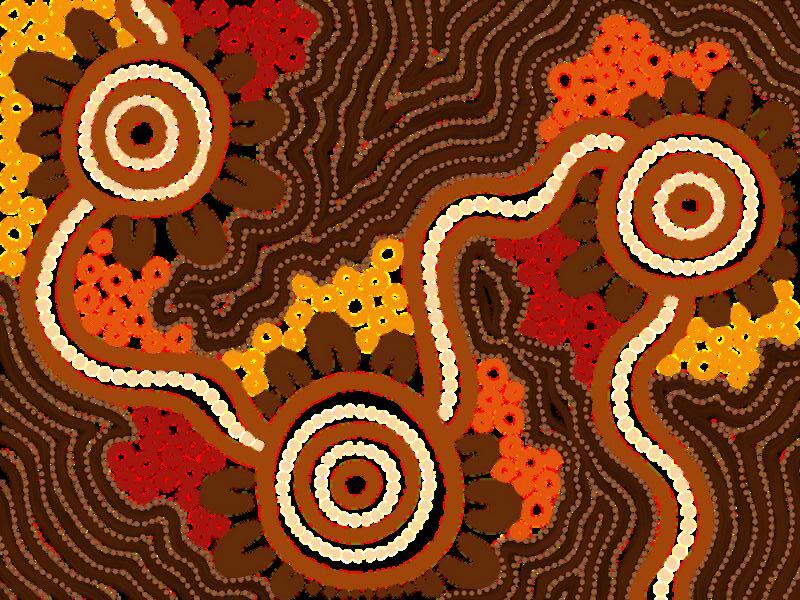

Indigenousleadershipandcollaborationare increasinglypartofGulfSavannahNRM’sDNA,where realoutcomesgrowfromstartingsmall,stayingflexible, andplacingTraditionalOwnersatthecentreofworkon Country.
This approach was on full display in a recent NRM Regions Queensland Lunch & Lead session, where GSNRM shared the story of how a simple conversation with Tagalaka Traditional Owners about pig predation and declining turtle sightings at Tagalaka National Park (formerly Littleton NP) grew into a meaningful, long-term partnership.
What began as a discussion about protecting turtles from feral pigs evolved into a project that helped the Tagalaka Aboriginal Corporation achieve a long-held aspiration: establishing a full-time Tagalaka Ranger Program
Indigenous Cultural Broker Natarsha Bell closed the session with a powerful reflection on the deeper meaning behind the project, introducing the Yalanji concept of Gugu Yaral “straight talk with heart and passion”
“WhenfiremovesacrossCountry,itcarriestruthwith it,” Ms Bell said
“Our survival has always depended on that truth our connection to land, water, and spirit. These are not just resources; they are our lifeblood,” she said
“Thestrugglewefacetodayisshowingthatconnection stillexists,thatitisaliveinus.Everyproject,everyact ofcareforCountry,isproofthatourheartsremainhere, groundedandstrong”
After a thriving 12-month stint, the initial collaboration between GSNRM and the newly formed Tagalaka Ranger team has now wrapped up





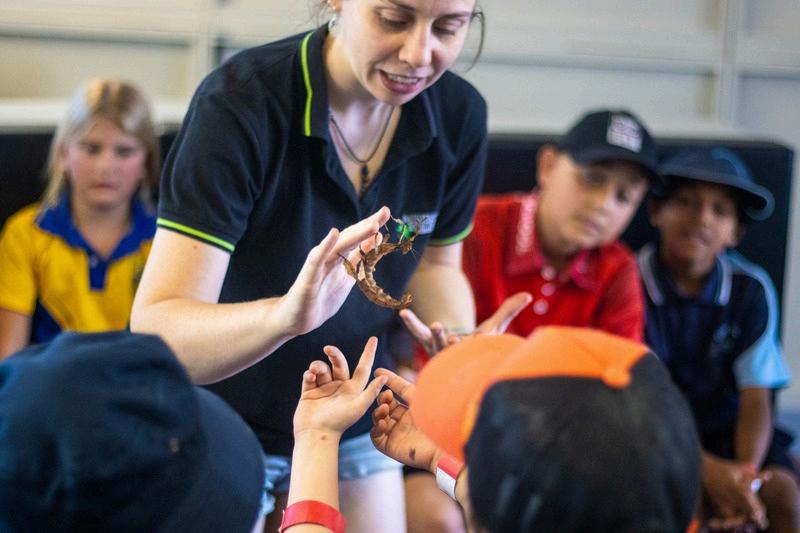
Although it’s been running for more than 15 years, Gulf Kids Day continues to grow in reach and impact. By combining science and creativity, it gives young people from some of Queensland’s most remote communities a chance to learn, connect and fall in love with the environment.

GulfSavannahNRM’slegacyeventGulfKidsDayonce againofferedagatheringplaceforlearning,laughter andconnection.
On Thursday August 28, the usually quiet town of Croydon was buzzing with energy as 122students fromfiveschoolsexploredscience,theartsand agriculturethrough hands-on workshops and outdoor games.
This year’s theme World Environment Day inspired activities that ranged from giant bug encounters and “soil explosions” to original artmaking and farm-to-table field games
While the abundance of children’s laughter was a clear sign of the day’s success, the event carried a deeper purpose: connection
Croydon State School principal Steven Simms said Gulf Kids gives students a rare chance to step outside their
usual routines and build new friendships.
“Not only does it give the kids a bit of an idea [about science and the environment] with the fun activities, it also brings other schools in and gives them engagement from different people they’re not used to seeing,” Mr Simms said
Student helper Christine from Forsayth State School agreed
“We only have four students at our school, so they don’t have a lot of opportunities to interact with other kids,” she said
“Today has been amazing, mostly for the interaction while doing activities.”
Spanning 29,538 square kilometres, Croydon Shire is nearly half the size of Tasmania but home to just 266 people.
According to the Australian Bureau of Statistics 2022 census, only 49ofthoseresidentsare14yearsofage andyounger.
More than 500 kilometres from Cairns, opportunities for large-scale, hands-on learning are therefore few and far between. Yet despite the hot, dry conditions and a landscape where there are morecattlethankids students threw themselves into the program with enthusiasm
Among the highlights was a water-filtration activity led by Oceane Dupont, Gulf Savannah NRM’s newly appointed Biodiversity Officer
“I was surprised by how much the kids already knew about water and filtration, because that’s what they’re used to here in the Gulf They take all their water from the rivers and dams, and then they filter it that’s how they get clean water,” Ms Dupont said

“They are pretty switched on, they do know how it works they were running around getting other things that weren’t supposed to be filtered and trying them Some were a success, some were not!”
Local artist Rebekah Haase from Georgetown guided students through a stamping-art workshop, encouraging creativity in a region where formal art programs are scarce.
Using native leaves, seeds and flowers, students learned to press these unique materials into paper and create their very own bush-inspired designs.
“There are always some kids in the group you can tell are in their element, and there are others who are still discovering what it’s actually like to do something creative with stamping art ” Ms Haase said


“It’s eye opening for them, and helps them consider what they might like to do at home more too ”
No single activity claimed the title of “biggest hit,” but the MiniBeastsWildlife display was a strong contender. Students met scorpions, centipedes, spiders and praying mantises up close some braving a gentle touch while others admired from a safe distance.
Encounters with native wildlife such as this help children see these creatures as a natural part of their world, reducing fear and fostering an early appreciation for the environment.
Teachers and supervisors were equally impressed, noting the value in this experience.
“We learnt that centipedes aren’t actually dangerous,” Croydon State School teacher Pam said “We don’t need to kill them!”
To fuel the fun, organisers put on a barbecue feast, serving more than 30 kilograms of fresh food to hungry participants. With appetites satisfied, students and staff took a moment to reflect on the day and share their thoughts on the event

“I’d just like to thank the team at Gulf Savannah for all the work they’ve put into this,” principal Simms said
“We really do appreciate you guys coming out here and doing something different to engage with the kids ”


A recent trip out west set the stage for important lessons on rural beauty. Across the Gulf, the landscape and sun clearly have an agreement: to trade in hue and silhouette no less than twice a day. With colour as their currency, we witnessed and were enveloped by this exchange Not even the emu or bustard could escape it













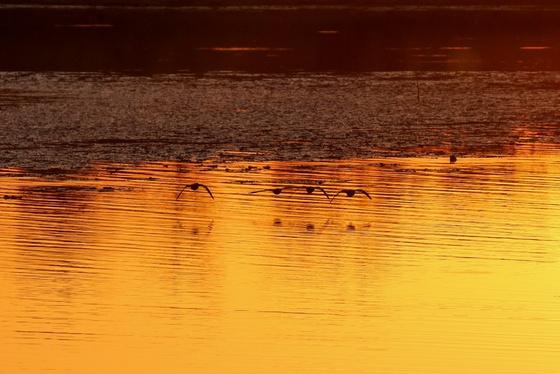



Awash with outback nostalgia, the trip’s more tangible highlights included Lake Belmore, Diehm’s Lookout, Croydon Heritage Precinct, the swimming hole, Charleston Dam, country night skies, and horizons so wide, you’d hit the limits of your imagination before the end of a locally forged dirt road As we kicked up dust, pigment and light settled on our senses, before the atmosphere breathed it all back into memory. Not even rearview mirrors capture how days like those linger





Through workshops and trial sites, Gulf Savannah NRM is helping producers swap chemicals for creativity, boost transparency from paddock to plate, and deliver safer, healthier food for consumers.
“Most farmers know the old ways of using toxic chemicals and expensive fertilizers have been a burden on them, they want to move away from that.”

Lifeonthelandisafrontline;ashockabsorberforextreme climates,restlesssoil,andpestswithdietarycravingsnot unlikeourown.Asaresult,farmersareoftencalledupon asweathervanesforchange–thefirsttofeelasharppull inanewdirectionandpointthewayforward.
Meanwhile, for many consumers, fruit and veg seem to jump from field to bowl Farm-to-table has taken root in popular culture, but most of the process evaporates like morning fog across the tablelands: easy to romanticise, but not enough to hold our attention for too long That distance between the toil of production and polished product on the shelf is becoming far more traversable with the growth of regenerative agriculture
Across the Gulf and Far North Queensland, Gulf Savannah NRM (GSNRM) is leading the shift: supporting local farmers to adopt more sustainable practices that benefit both businesses and the broader community, the organisation is conducting a series of workshops over the next three years as part of its Climate-SmartAgricultureProject.
By connecting producers with specialists from various fields, the workshops are building a new knowledge and practical capacity, especially in the Mareeba and Dimbulah locales.

Under the leadership of Agriculture Officer Jessica Miranda, three workshops have taken place so far, each respectively focused on soil health, regenerative farming and the carbon market, as well as integrated pest management ‘Empowerment’ and ‘knowledge’ were the words Ms Miranda kept trailing back to when speaking to the potential of her project, as well as the co-benefits that will be enjoyed by various demographics
“Farmersallwanttobemoresustainableifitdoesn’tmean economicloss:theyallwanttohavehealthiersoil,that's forsure,” Ms Miranda said
“The Australian market has a huge demand for less pesticides, for organics, for non-GMO; consumers want to eat something that’s healthy and has been grown sustainably,” she said.
“Farmers are interested in getting to the point where they don’t need to use pesticides anymore, or chemical fertilisers, and are hoping consumers will also be willing to pay more for these premium products ”
With interest high and practical guidance available, producers are showing up in full force.

If enthusiasm could be measured in bums on seats, then Mareeba and Dimbulah residents were certainly eager on June 25, when more than 50 producers gathered at the Mareeba Leagues Club for the second workshop in the series
Guest speaker André Leu Daintree mango farmer and president of Regeneration International captured the room’s attention when he introduced simple, chemical-free soil care methods, including the use of everyday household products like vinegar
With over 50 years in the industry, Mr Leu’s presentation combined a deep foundation of science and lived experience
“Business as usual in farming no longer works”, Mr Leu said.
“Weactuallyhavewhat’scalledafarming diaspora:peopleareleaving,sowe’relosing millionsoffarmersallaroundtheworld.”
Studies back Mr Leu’s concern Research from the Food and Agriculture Organisation shows that global pesticide use has risen steadily over the past three decades, yet yields have plateaued, meaning farmers are paying more without necessarily producing more.
Additionally, according to the Australian Bureau of Agricultural and Resource Economics and Sciences (ABARES), the benchmark for on-farm chemical costs rose to $3 billion in 2014,
highlighting the economic incentive to explore low-input methods
Thankfully, Mr Leu believes many growers are already aware of these challenges and are cultivating a landscape for change
“Most [producers] know the old ways of using toxic chemicals and expensive fertilizers have been a burden on them; they want to move away from that. Whatwe’redoingisofferingthem practicalwaysofdoingitandshowingthem howotherfarmershavesuccessfullydoneitso theycanstartthisjourney,” he said
“It’s practical farming – by farmers, for farmers ”
Beyond the workshops, GSNRM’s Climate-Smart Ag project is also establishing trial sites to test both traditional and emerging methods, giving producers an updated toolkit of techniques One such site is Jennings Farm, where bug traps have been deployed to reduce chemical use in insect control.
These traps are distributed densely across landholder John Jennings’ graviola crop and use aggregation pheromones to attract bananaspotting bugs to sticky panels The technology offers precise pest management, while sparing ‘beneficial’ insects and important pollinators.
Throughout various mornings spent alongside John amid his crop, an undeniable sense of custodianship for his land was demonstrated through his words and actions.


“Farmers all want to be more sustainable if it doesn’t mean economic loss: they all want to have healthier soil, that's for sure.”

WhatarelocalproducerssayingaboutGSNRM’sworkshopsandthe germinationofregenerativeagriculturethroughoutourregion?
“The most valuable thing was the reiterationofmycurrentideas; it confirms that the practices I’m using are valid. I also got some novel information today, in particular about the management of pests in a different crop to what I’m usually in. Lots of learnings for me!” -Richard
“These kinds of events are really helpfulformyknowledgebaseabout soil; about how to manage weeds and not think of them as weeds It’s changing my mindset againrecalibrating me back into a positive view about the kinds of things that come onto your property without your control.” -Deb
“I’m looking for different practices to improve pasture and finish off the cattle. I’ve learnt about moving away from pesticides for weed eradication, and using weeds as opposed to eliminating them This information is invaluable. [The biggest takeaway is] seeingthatthisisthefuture-weneed tolookattakingcareofwhatwehave, and[form]abetterunderstandingof howtochangeworkpracticesand evolve I hope that we can, as a collective, show the way; not just in the industry, but also for the generations coming through”
-Rick
“It’s good to know there’s a research focus on [integrated pest management]; I’ll definitely be keeping an eye out for results from that and what we can implement in our management There are also discussions around the room about chemical controls, what people are using, what they’re seeing as far as timing and impacts on beneficials There’salwayssomethingtolearn whenyougetagroupofgrowers togetherandhearaboutother people’sexperiences.” -Dale
“We’ve been farmers for 56 years We started off with tobacco and now have limes, lemons and cattle We’re finding that fertilizer and water are a very big cost. It’s very good to see another point of view, completely different to what we’ve been taught to farm Organics aresomethingyouthinkdon’tmixwith commercialfarming,butIcanseeit canbeimplementedtosavemoney andmakethingsbetter.”
-Evelyn
“It’sgreattohearfrom entomologistsabouttheactual ecologyofpestsandtheirlife cycle, as well as understand what to look for in your orchard, and then network with growers who are currently using these practices; learn from them. and then trial [these techniques] onfarm while asking for help”
-Marine








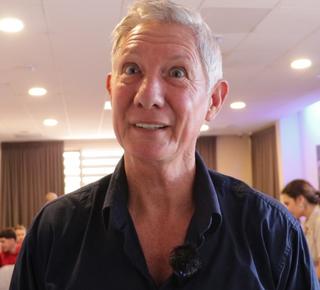




“I like cats – they're coolanimals andamazing predators, but unfortunately they’re a huge issue for native wildlife.”

eAustraliahasalwaysbeenalandof xtremes:vegetationquickto igniteatthefirstdrybreeze, andsriversthatswellwiththewet easononlytovanishintohidingformonths.
Andyet, manyofournative ospecieshaveadapted;againstall dds, theamphibians, the mammals, thebirdsandquietlittle sreptileshavecarvedoutawayto yurviveandthriveforthousandsof ears. Thatbalancehelduntilrecently, whenthreatsemerged nthatAustralia’snativefaunacould everhaveanticipated:settlerintroducedpests, betterknownas invasivespecies. Onesuchthreatisferalcats.
ANowcovering99.8percentof ustralia’smainlandandislandterritories, feralcatsare tresponsiblefordevastatinglosses owildlife. Statisticspaintagrim picture, whileon-the-ground aobservationsilluminatehowfar bndwidespreadthisissuehas ecomeforconservationefforts







Thefirstpawsthatsteppedashore
According to the Threatened Species Recovery Hub, cats colonised the nation as early as 1788, coming ashore with the first fleet Genetic analyses and historical data indicate cats had spread across the entire continent within 70 years, with only 01 per cent of land mass remaining cat-free today [exclusively on islands or purposefully fenced and protected areas]. This surge was fueled by later introductions to manage other nonnative pests, especially those which created complications for farming. Unfortunately, cats found a thirst for more than just rodents and rabbits
Acollationofalmost100studies indicatestherearenow approximately3.8million domesticatedcatsinAustralia,and anywherebetween2.1and6.3 millionferals:afigurewhich fluctuateswithrainfalland availabilityofprey
Though most people make a distinction between pet cats and ferals, it’s important to note they’re the exact same species and possess an equal capacity for predating on wildlife
Forgetthemillions,lossisinthe billions
“Cats are very elusive and hard to monitor, they’re hard to trap and track,” he said
“Australianwildlifehasevolved withoutcatsintheirenvironment, sotheydon’trecognisecatsasa threat.”
This concept, scientifically referred to as ‘prey naiveté’, accounts for the fact that native species lack evolutionary predator recognition for certain dangers. For example, studies suggest the impact of feral dogs and foxes is less significant due to their taxonomic connections: native species have had approximately 4000 years since canids, in the form of dingoes, were first introduced Hence, they’ve had time to develop the typical responses for staying safe: camouflage, mimicry, flee, hide, and at all costs – avoid
When it comes to felids, these anti-
indicate they do not
“There are many small to mediumsized mammals that have gone extinct either directly or in part due to feral cats,” Dr Evans said.
Though there are many ways to illustrate this devastating knock to wildlife, it is difficult to capture the full scope and impact Catshave playedamajorroleinthe extinctionof25nativespecies, includingthelesser‘yallara’bilby, pig-footedbandicootandbroadfacedpotoroo
Cats continue to be a major concern for land mammals such as the bilby, bandicoot, bettong and numbat In fact, predation by cats is a recognised threat to over 200 nationally threatened species, and 37 listed migratory species
Asingleroaming,huntingcatwill killmorethanthreeanimalsevery week, which adds up to approximately 186animalsperyear.
This leads us to the truly concerning figures Each year, across Australia, feral cats kill:
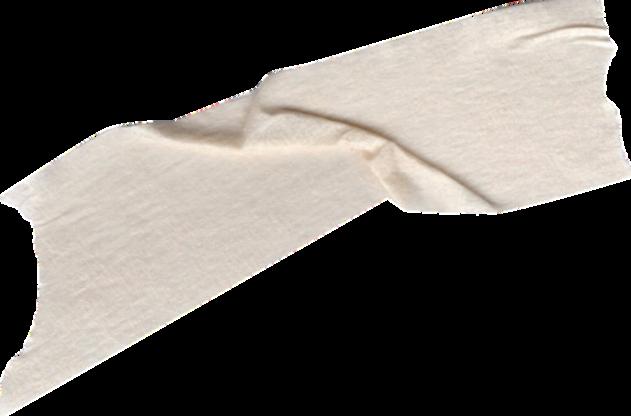
What matters even more than the headcount is the havoc they wreak each pawprint carries consequences far beyond cat numbers
Gulf Savannah Biodiversity Officer Dr Edward Evans explains why cats pose such an outsized threat to native species compared to other predators



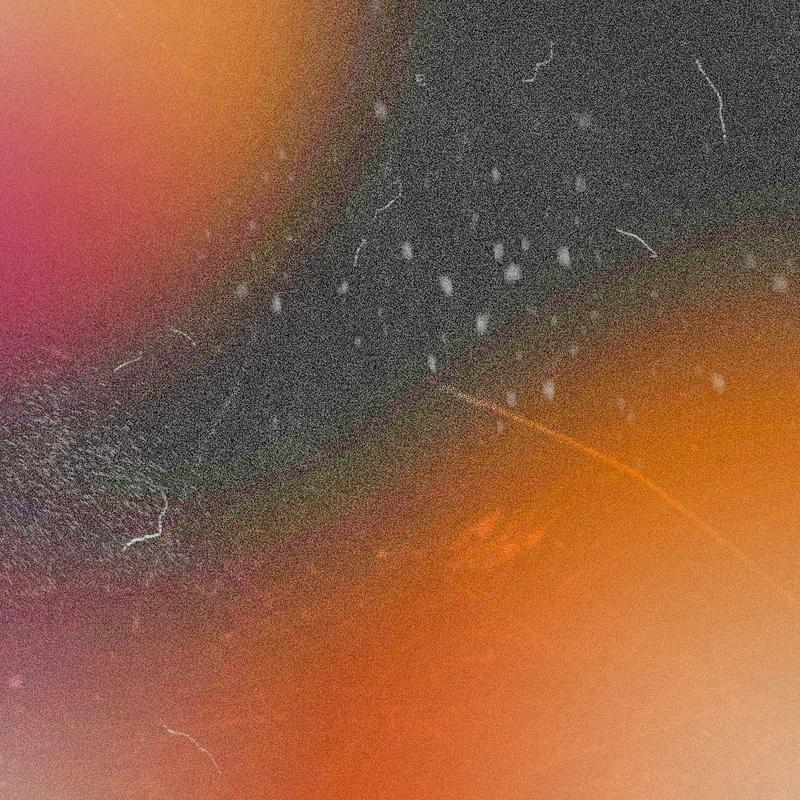


And of course, as is the case for any ecosystem, if one species disappears, flow-on effects follow and leave longlasting impacts we cannot at this stage be certain of.
When it comes to controlling cats, there is no quick fix, especially when they have an uncanny ability to win over human affection: scientists even suggest their parasites, such as Toxoplasma gondii, may play a role in positively influencing human behaviour towards cats This emotional pull complicates any effort to reduce their numbers, even as evidence mounts of the damage they cause
Dr Evans even confesses: “I like cats –they're cool animals and amazing predators, but unfortunately they’re a huge issue for native wildlife.” Across Australia, management measures are debated and range from tighter laws for pet owners, to targeted shooting programs, to one north-Queensland shire that even offers a $10 bounty for cat scalps Each method sparks controversy: what’s humane, what’s effective, and who decides?
On the ground, Gulf Savannah NRM is trialing practical solutions of its own, including the deployment of motionsensor camera traps in Mt Lewis National Park and Mareeba Wetlands Reserve.
BiodiversityOfficerOcéaneDupont explainstheinitiativeinmoredetail: “Bysettingupthesecameras,we're tryingtoprotectthebroader ecosystem,”shesaid.
“We’retryingtoseewhatthestatus ofthenativespeciesis,suchasthe northernbettong,andgetafeelfor thethreatsthey’refacing.”
Each camera is a small but vital step toward understanding what’s happening on the ground By gathering clear evidence of threats and species activity, projects like this give communities and decisionmakers the information they need to undertake cat control methods moving forward
The challenge, as GSNRM staff will te you, isn’t just removing a single predator: it’s balancing science, culture, and community values to give native wildlife a chance to recover



In the next edition of the Croaker, we’ll continue this pest portfolio series with invasive species any communities oughout Australia are all too familiar with: feralpigs.








WhiteCedar canoftenbemistakenfor Neem. Generally, the former is deciduous, mediumsized (up to 12 m), with a spreading canopy and seasonal leaf loss Here are some other key differences:
Leaves= White Cedar has compound, bipinnate leaves with smaller leaflets, turning bright yellow in autumn Fully deciduous
Flowers=Lilac to almost white flowers with a purple staminal tube, arranged in large panicles

Fruits=Yellow, fleshy drupes (1–1 5 cm) with a hard, ribbed stone inside containing five seeds; fruit persists on the tree after leaf fall. Toxic to humans and animals

Invasive neem trees in the Gilbert River catchment have been a significant concern for residents, graziers and local councils due to their impact on the natural environment and agricultural production value. –GSNRMCEOZoeWilliams






“Meat is the aim, pasture is the game.”
Meet Julie Nicolosi – one of GSNRM’s Agriculture Officers and project lead for Improving Land Condition across northwest Queensland. Though an agronomist with a dual degree in Sustainable Agriculture and Agribusiness, Julie’s connection to the grazing world runs far deeper than formal qualifications

Q:Julie,canyouintroduceyourself,both professionallyandpersonally?
A: When I was probably about 13, I told my mum I was going to be an agronomist, because I had decided that there had to be more to raising cattle than good genetics and praying for rain. So, I set off on a mission to figure out how to grow grass I've got a strong passion for pastures and eco-landscape management as well, so taking a holistic approach We sometimes like to think that we can separate plants from the environment, from the climate, but climate and environment tend to be one and the same
Q:You’vementioneditcanbedifficultforlandholders tobalanceenvironmentalandeconomicinterestscanyouelaborate?
A: Unfortunately, on the farm I grew up on, I watched the decline of the pastures and the condition of the land That’s probably why I’m so passionate about people trying to improve land condition, because I can see that grass equals meat, and meat equals dollars. Meat is the aim, pasture is the game Graziers are grass farmers and grass managers; we just happen to use cows to harvest something nothing else can eat, and we sell cattle to make money.

Whatever we advise them to do, it has to be financially viable, because otherwise they’re going to say they can’t afford it So, we want to consider how we can manage grazing to sustain the ecosystem rather than sustain the ecosystem for grazing
Q.Howcanlandholdersmanagegrazingtoprotect theecosystem?
A.Rest-based grazing allowing sensitive areas to have rest during the growing season so vegetative growth can occur You want a staggered succession in trees, with old, middle, and young trees That way, as one tree dies, another comes in behind it, supporting biodiversity birds, reptiles, and everything that lives in trees It’s like people: grandparents teach, parents manage, kids learn The land works the same way succession matters.
Start adding rest periods to let the pasture recover and observe productivity It’s a faith test you have to trust the process. It’s a big change, but it prevents the destruction of grass diversity
Q:Howdoyouseefarmers’attachmenttotheland andtheirknowledgeofit?
A I think it’s sad we have this connotation in the media that farmers are the reason we have degraded landscapes, and yet there is a really strong correlation with farmers to the land, like the familiarity, calling it home I truly believe farmers care they care more than I think anyone else could possibly care for the land that they own and run It’s your home, it’s more than a house on a cul-de-sac with a green lawn out the front It’s a whole business, it’s your family, your kids grow up working it. At the end of the day the only constant is the land, and it’s hard not to be attached to it when you grow up on it
I remember my dad telling me about before the cane toads, when there were sand goannas everywhere You couldn't go anywhere without seeing them big ones, little ones, you name it Landholders, such as my dad, are the ones running around saying “you can’t take that tree,” because a bird wants to live there Farmers may not know scientific names, but they have a common name for it, they know what lives in it, when it grows and flowers, what can eat it, what can’t, what’s poisonous too
A producer has many jobs all wrapped into one title, and one of those is you have to be a land manager; whether you’re cropping or grazing, you have to care about the condition of the land you manage

Q:Howwouldyouencouragefarmershesitant aboutholisticmanagement?
A My message for those on the fence: you only have to do a little bit, a little bit goes a long way. Even on a small scale, just watch it for a bit If it’s the science that’s not helping, read about it There’s no perfect time to start, but the longer you leave it, the harder it becomes, and the worse the land condition gets.
If you have succession in mind, your children or your grandchildren are going to stay on and keep going It's not going to be viable for them either to go from a D back to a C or even a B in their lifetime; it will be a financial burden for them in terms of productivity and environmental sustainability
There’s always going to be a project going in the grazing system with Gulf Savannah NRM I know it’s uncommon in the beef industry to pay for a consultant to help with management decisions, but I believe it is the way of the future
Q Anythingelsetoadd?
A. I am very passionate about pastures, perhaps too passionate! I find it fascinating, the relationship plants have to the rest of the food chain There is nothing else on the planet that can convert light energy into chemical energy we can use for food and power We take that for granted, but it’s some very dramatic, very cool science

“I truly believe farmers care — they care more than I think anyone else could possibly care for the land that they own and run.”
Gulf Savannah NRM is delivering a range of projects in regenerative agriculture, biodiversity, fire and drought management, community resilience, and more.
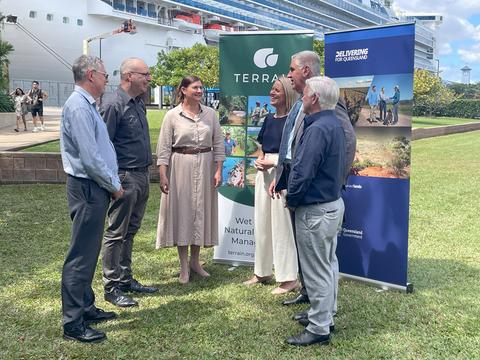

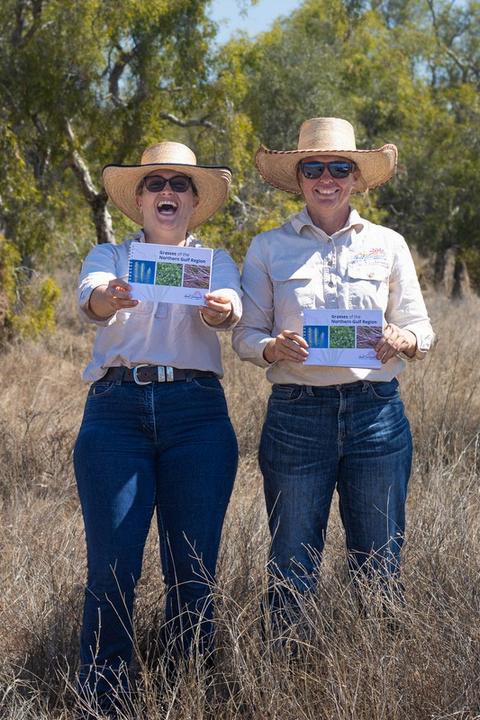
Following the 2025 NRM Knowledge Conference in Cairns, 18 participants continued their conversations in the field by joining a two-day field trip co-hosted by Gulf Savannah NRM and Terrain NRM
The trip highlighted the diversity of our landscapes, from rainforest to savannah Project officers, botanists and Indigenous rangers shared their insights about working in wet sclerophyll forests, protecting threatened vine thickets and supporting sustainable agriculture locally
Everyone enjoyed the opportunity to immerse themselves deeper into our unique region and meet iconic local species such as spectacle flying foxes and northern bettongs, not to mention some elusive birds spotted on the way.
Thanks to the expertise of recently appointed Sustainable Agriculture Facilitator Mandy Pickering, Grasses of the Northern Gulf Region is now available!
Discover over 40 grass species with images and scientific names, plus key info on land type, forage value, perennial status and productivity all in one easy-to-use guide that fits in your glove box

It’s the perfect field guide for landholders, ecologists and citizen scientists alike!
Contact us today to request your copy




Warmer-than-average conditions are expected across all regions (60%-80% chance maximum temperatures will be above average), with a heightened risk of extreme heat. This could mean increased heat stress for livestock, especially in areas forecast to exceed 40°C.


eat the ols

Getthelatestclimateinfo
Want to stay up to date with weather and climate forecasts? Sign up for updates from the Northern Australia Climate Program and you'll get a monthly climate information update delivered straight to your inbox!
Climatedrivers:
ENSO remains neutral, but La Niñalike conditions may briefly appear The negative IOD is expected to persist, and sea surface temperatures around northern Australia remain among the warmest on record.



Haveyoucheckedtheweatherforecastatyourlocation?
Haveyouidentifiedandanalysedthepotentialrisksinyourlocation(floodandcyclone)?
Haveyoucontactedyourlocalcouncilaboutfloodorcycloneriskinyourarea?
Checkwithyourlocalcouncilandtheirdisasterdashboardtoaccess: floodplansorrecordsinyourareaandlocaldisasterupdates localgovernmentandcommunitydisasterplans localfloodarrangements informationaboutroadclosures,riverheights,evacuationcentres
Makeanemergencyplanandidentifywheretoshelterduringextremeweather Completeyour emergencyplanatgetready.qld.gov.au/plan.
Checkyourinsurancecoversfloodandcyclone/stormdamage
Clearlooseequipmentandvegetationaroundbuildingsandaccesspoints.Clearguttersanddownpipes. Prepareaninventoryoflivestock,infrastructure,andequipment.
Ensureyouhavesufficientfodder,medication,andwatersuppliesforanimals.
Havematerialsreadytosecuredoorsandwindows.
Makeaplantomoveelectricalequipment,chemicalsandhazardousmaterialsabovegroundlevel.
Locateandpackyourcriticaldocumentssuchasfinancial,insurance,legalandidentificationdetails, andimportantplansinaportablewaterproofcontainer
Back-upyourcriticaldatatoaportablestoragedeviceandstoreitinasecureoff-sitelocation Packanemergencykitandkeepitwhereyoucanquicklyretrieveit. Includeessentialitems,includingkeys,radio,torches,batteries,powerbank,mobilephoneand charger,essentialmedication,andfirstaidkit.


Emergencyservices(police,fireandambulance)
Triple Zero (000)
One Zero Six (106) through your telephone typewriter (TTY)
Otherservices
Flood and storm emergency assistance: SES 132 500


Alerts and evacuation centres: ABC local radio and council disaster dashboard
Road conditions and closures: qldtraffic qld gov au
State-wide road conditions: 13 19 40
Animal emergencies: RSPCA Queensland 1300 264 625
Georgetown106.1FM
MountGarnet95.7FM
Croydon105.9FM
Karumba106.1FM
Dimbulah91.7FM
Atherton720AM
Normanton105.7FM
